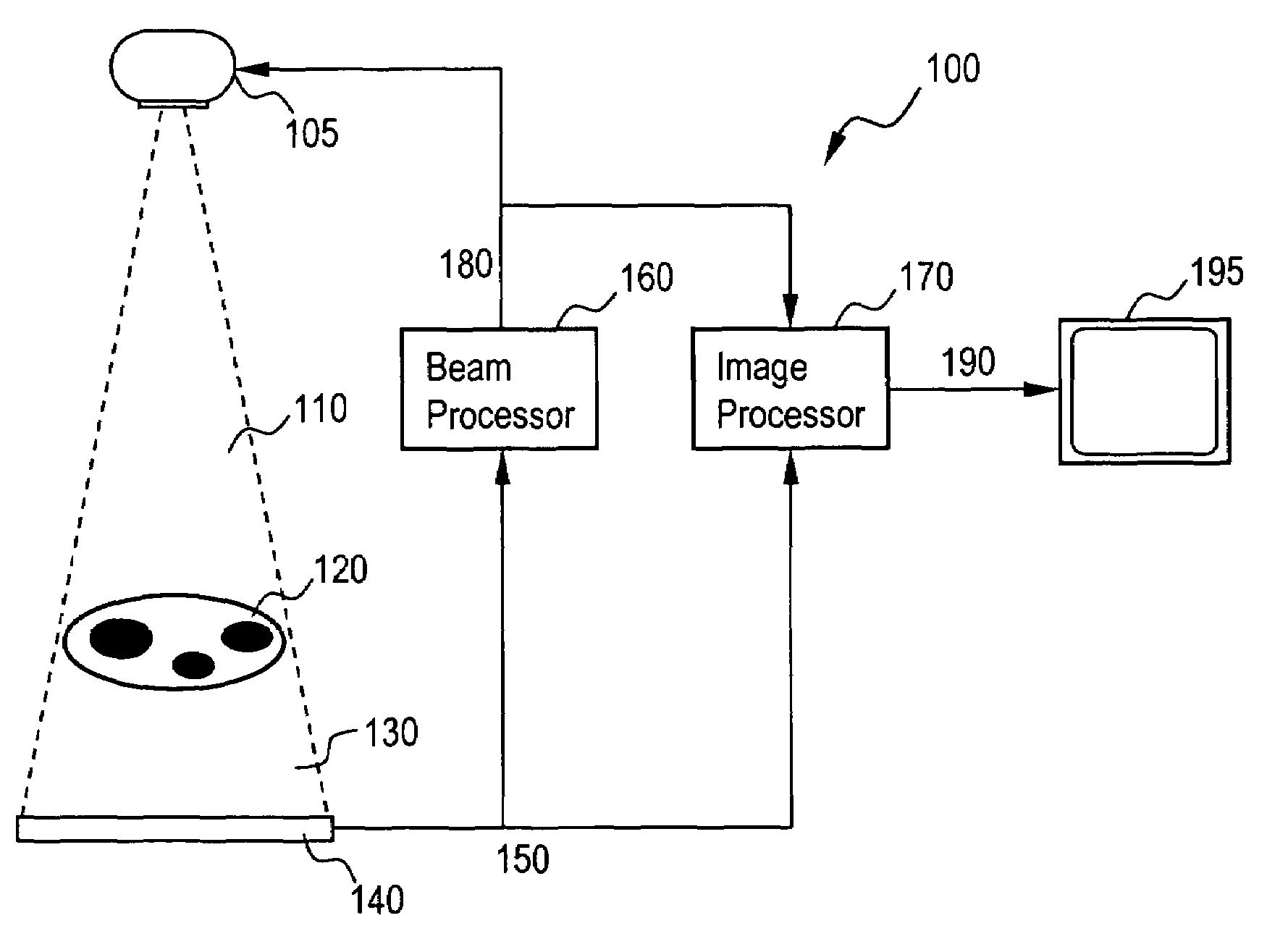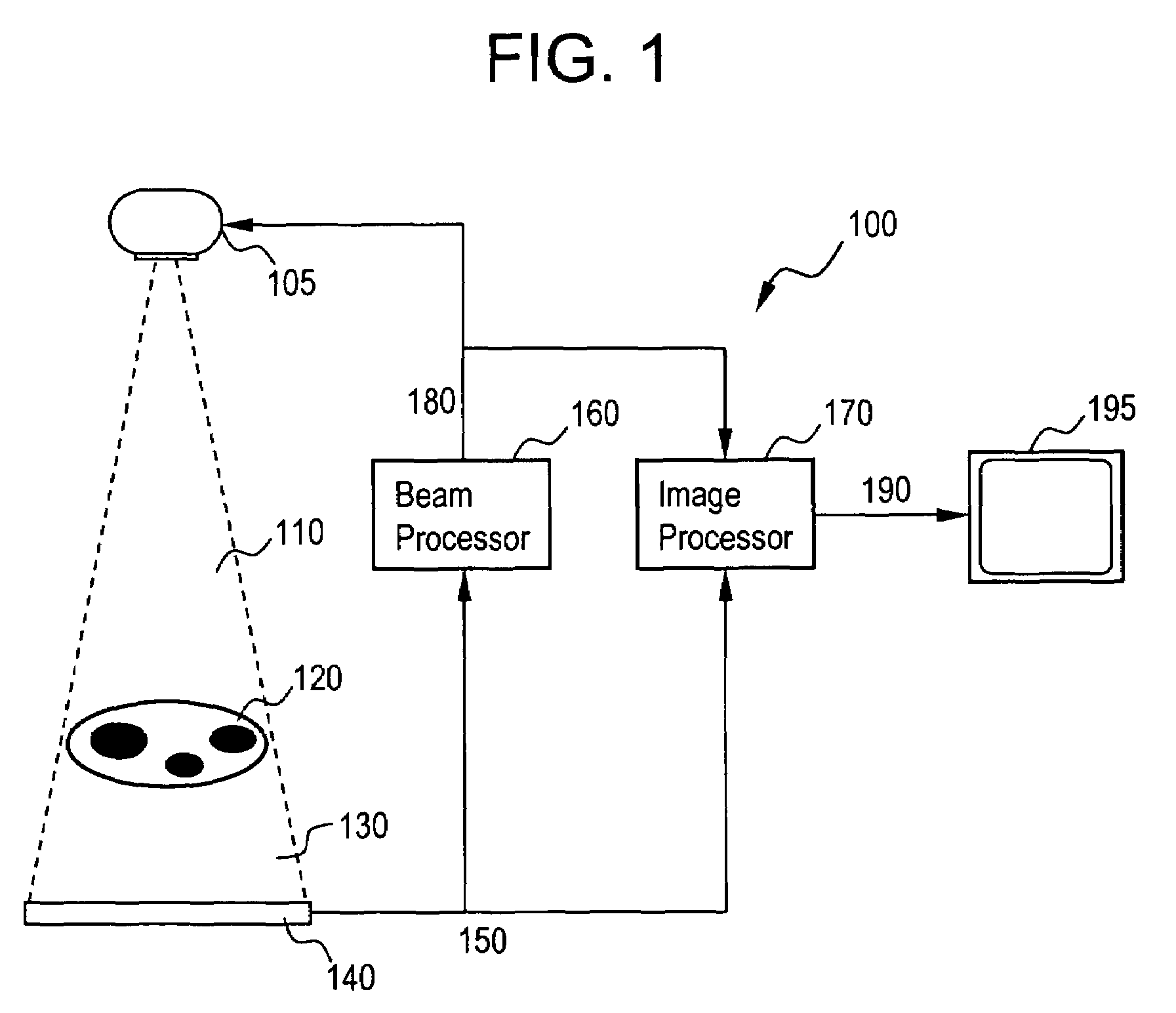System and method for an adaptive morphology x-ray beam in an x-ray system
a technology of adaptive morphology and beams, applied in the field of xray imaging systems, can solve the problems of insufficient contrast of shadow images for features in objects, requiring much less dose to be imaged adequately, and affecting the quality of x-ray images, etc., and achieves a wide range of gradation levels.
- Summary
- Abstract
- Description
- Claims
- Application Information
AI Technical Summary
Benefits of technology
Problems solved by technology
Method used
Image
Examples
Embodiment Construction
[0036]FIG. 1 illustrates a schematic diagram on an x-ray system 100 using x-ray beam modulation in accordance with an embodiment of the present invention. System 100 includes an x-ray source 105 producing a spatially modulated beam 110, an imaged object 120, an x-ray detector 140, an x-ray beam processor 160, an image processor 170, and a display device 195. Modulated beam 110 passes through imaged object 120, is attenuated to various degrees by its features, and forms residual beam 130. Detector 140 measures the beam intensities in the residual beam 130 and communicates a residual image 150 to the beam processor 160 and the image processor 170. A beam intensity signal 180 can be communicated from the beam processor 160 to the x-ray source 105 and to the image processor 170. The image processor produces a displayed image signal 190 and communicates to display device 195.
[0037]As mentioned above, source 105 is capable of transmitting a spatially modulated beam 110 towards imaged obje...
PUM
 Login to View More
Login to View More Abstract
Description
Claims
Application Information
 Login to View More
Login to View More - R&D
- Intellectual Property
- Life Sciences
- Materials
- Tech Scout
- Unparalleled Data Quality
- Higher Quality Content
- 60% Fewer Hallucinations
Browse by: Latest US Patents, China's latest patents, Technical Efficacy Thesaurus, Application Domain, Technology Topic, Popular Technical Reports.
© 2025 PatSnap. All rights reserved.Legal|Privacy policy|Modern Slavery Act Transparency Statement|Sitemap|About US| Contact US: help@patsnap.com



